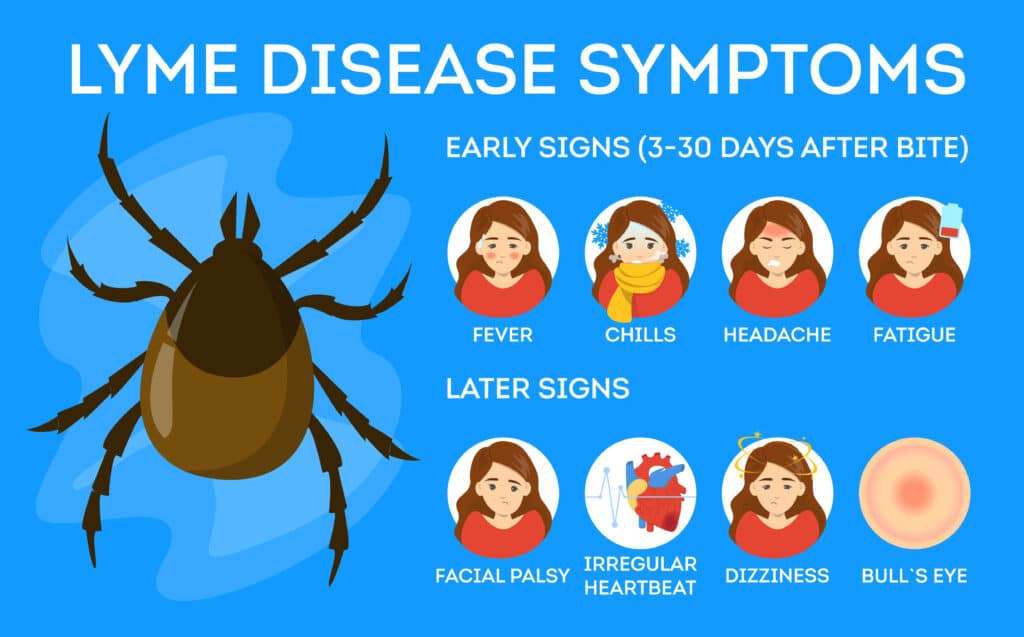
Ticks are not just a concern for humans, they are also a common problem for our furry friends, particularly dogs. These tiny parasites can not only be shocking and disturbing to find feeding on your pet, but they can also transmit serious diseases. In this article, we will explore the importance of tick prevention for dogs, the common tick-borne diseases they can contract, their symptoms, diagnosis, treatment, and prevention methods.
Lyme Disease

Lyme disease is a bacterial infection that can affect not only humans but also mammals and birds. It is primarily transmitted through the bite of a deer tick. Dogs can be especially susceptible to Lyme disease and can exhibit various symptoms. The most common sign is lameness, but dogs may also experience fever, joint swelling, kidney damage, and neurological issues. Increased thirst, urination, lethargy, and stiffness are also possible indicators of Lyme disease in dogs.
To diagnose Lyme disease, your veterinarian may conduct in-house laboratory tests such as the 4dx test. This test can screen for Lyme disease even if your dog is not showing any clinical signs. Additional diagnostic tests, such as urine samples and further bloodwork, may be necessary to confirm the disease. Treatment for Lyme disease involves a four-week course of antibiotics to clear the bacterial organism. However, in some cases, the organism can be challenging to eliminate completely, leading to lifelong disease and permanent damage to your dog’s body. Prevention is crucial and can be achieved through flea and tick preventatives and vaccination.
Canine Granulocytic Ehrlichiosis
Ehrlichiosis is another tick-borne disease that affects both dogs and humans. It is primarily spread through the bite of the lone star tick. Acute symptoms include fever, lethargy, decreased appetite, enlarged lymph nodes, evidence of bleeding, and lameness. Chronic symptoms, which can be more severe, may include weight loss, joint swelling, and weakness. Dogs may show acute symptoms within one to three weeks after being infected with canine granulocytic ehrlichiosis, but clinical symptoms may take months to a year to manifest.
Diagnosing ehrlichiosis relies on the presence of symptoms, bloodwork, and the 4dx test. Early detection offers a better prognosis, as treatment can be initiated promptly. Treatment for ehrlichiosis is similar to that for Lyme disease, involving a course of antibiotics. While many pets clear the infection without treatment, subsequent annual 4dx tests may continue to be positive, indicating exposure but not necessarily active disease. Prevention primarily revolves around the use of monthly flea and tick preventatives.
Anaplasmosis

Anaplasmosis is yet another tick-borne disease that affects dogs and humans. It is transmitted through tick bites, similar to Lyme disease and ehrlichiosis. Symptoms of anaplasmosis in dogs can include lethargy, lameness, neck pain, bruising of gums and belly, and neurological issues. Lameness and joint stiffness are the most commonly observed signs. Some pets may show no symptoms, while others may exhibit symptoms for one to seven days.
Diagnosing anaplasmosis relies on the presence of symptoms, bloodwork, and the 4dx test. Early detection leads to a better prognosis. Treatment for anaplasmosis is similar to that for Lyme disease and ehrlichiosis. While many pets clear the infection without treatment, subsequent annual 4dx tests may continue to be positive, indicating exposure but not necessarily active disease. Prevention is essential and involves the use of monthly flea and tick preventatives.
Overall Tick Prevention
Tick prevention should be a priority for all dog owners to safeguard their pets from these harmful parasites and the diseases they carry. Here are some key steps to prevent tick infestations and tick-borne diseases in dogs:
- Monthly Flea and Tick Preventatives: Use high-quality flea and tick preventatives that repel ticks or kill them quickly. Products such as Bravecto and Activyl are effective in preventing ticks and also provide protection against fleas.
- Yearly 4dx Test: Have your dog tested yearly using the 4dx test. This test screens for heartworms, Lyme disease, ehrlichiosis, and anaplasmosis. Early detection can lead to more successful treatment outcomes.
- Lyme Disease Vaccine: After a negative 4dx test, consider vaccinating your dog against Lyme disease. This vaccine is recommended for dogs that spend a significant amount of time outdoors or frequently visit grassy or wooded areas.
- Regular Tick Checks: Inspect your dog’s haircoat thoroughly after outdoor activities, especially during the warmer months. If you find a tick, remove it promptly using proper techniques. You can seek assistance from your veterinarian if needed.
Remember, ticks can also enter your home through your pets, so it’s important to protect yourself as well. While Lyme disease is not directly transmissible from dogs to humans, ticks can crawl off your pet and onto you, putting you at risk. Take precautions by wearing protective clothing, using tick repellents, and performing regular tick checks on yourself.
In conclusion, tick prevention is crucial for the health and well-being of your dog. By using monthly preventatives, conducting yearly 4dx tests, considering vaccinations, and performing regular tick checks, you can significantly reduce the risk of tick-borne diseases in your furry companion. Stay vigilant, and consult with your veterinarian for personalized advice and recommendations.
